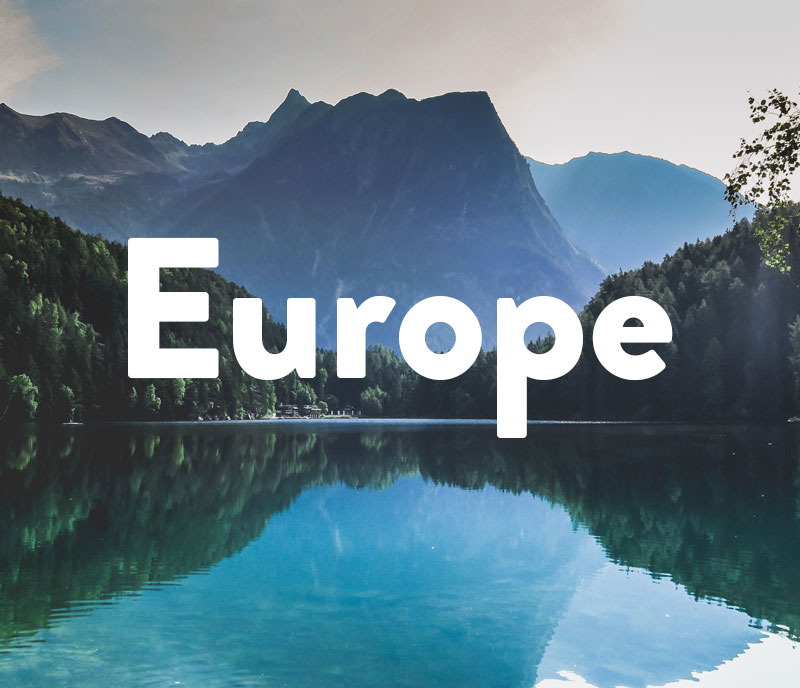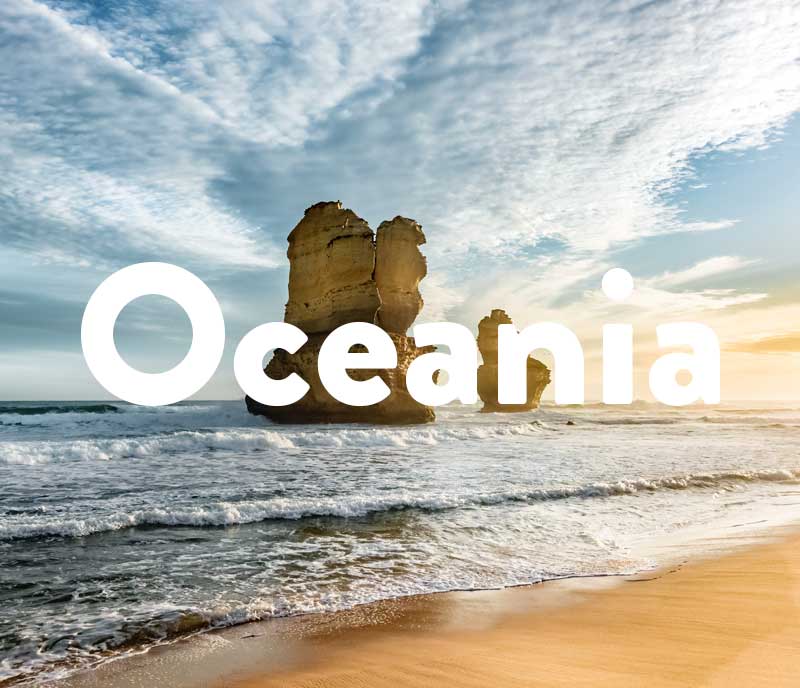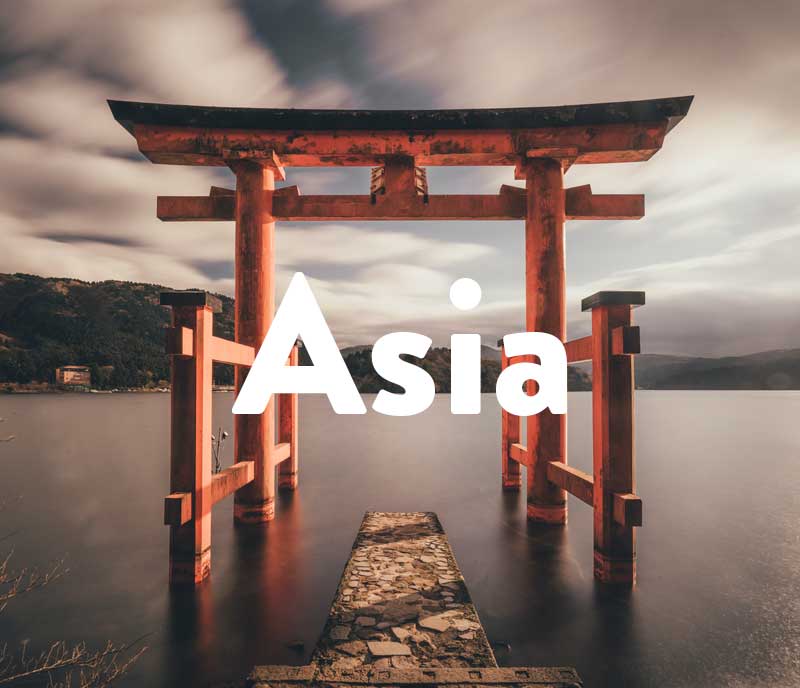Ecuador is a small country, but It has a lot to offer in terms of tourism. It is always overlooked when it comes to visiting South America in favor of its bigger and better known neighbors.
In this guide you will find all the information you need in order to visit this wonderful country – and why you should!
Dive into our (free) travel guides below!
.
.
.
.
.
.
.
.
The Key Info
Ecuador is the fourth smallest country in South America and it is located in the northern Pacific coast of South America.
It shares its borders with only two other countries: Colombia in the north, and Peru to the south. All across Ecuador’s western border lies the Pacific Ocean.
Ecuador’s capital is Quito, where in its metropolitan area is home to over 2 million people.
Spanish is the official language in Ecuador, although there are other languages belonging to indigenous groups that are also official within those communities, like Quechua and Shuar.
There are three distinct biological areas in the country that run in the north-south line: the coastal plateau, covering the land closet to the ocean, the section of the Andes mountain range, located in the center of the country, and part of the Amazon basin to the west of the country.
Ecuador in numbers
- Population: 17,300,000 inhabitants
- Total size of the country: 283,561 km²
- Capital city: Quito
- Currency: US Dollar
- Languages: Spanish
- Religion: Roman Catholic (83%), Protestants (11%), non-religious and others (6%)
The 5 largest cities in Ecuador
The largest cities in Brazil are Guayaquil, Quito, Cuenca, Santo Domingo and Machala.
# 1 Guayaquil
It is the biggest city in Ecuador with over 2.6 million inhabitants and it is located in the southern part of the country.
Guayaquil was founded in the 1530s decade and you can visit its historic neighborhood, Las Peñas, and climb the 465 stairs to the top of the Santa Ana mountain in order to enjoy a magnificent view of the city and to check out the place the city was born.
Guayaquil is also the place where cruise ships to the Galapagos leave from. As a result, it’s becoming a major player in the tourism industry for the country.
# 2 Quito
Quito, the capital, is located at the feet of the Pichincha volcano. This impressive location, at the heart of the Andes and in center-north of the country is home to almost 2 million people.
It is known for its historic city center, one of the biggest and best preserved in Latin America. Here you will find endless narrow streets decorated with flower dense balconies and colonial churches like the metropolitan cathedral or the newer but impressive Basilica del Voto Nacional. And for an incredible overview of the whole city, don’t hesitate to jump on the so called “TeleferiQo”, a cable car that will take you to the top of one of the mountains surrounding the city.
A visit to Quito won’t be completed without visiting Ciudad Mitad del Mundo, a monument marking the equatorial line passing through the city that divides the Earth in the two hemispheres.
# 3 Cuenca
Cuenca has around 580,000 inhabitants and it is located in the south of the country, at the bottom of a valley on the Andes.
Cuenca is considered to be the cultural capital of the country, so there are a lot of options in terms of museums (Pumapungo Museum or the Pumapungo Archaeological Park) , live music and so on. The city center is also of colonial origins and it is a great place to just wander around. Don’t forget to check the Cathedral (and climb to the top of its towers for an awesome view of the city). Also definitely gett a “Limpia”, or traditional spiritual cleansing in Mercado 10 de Agosto.
# 4 Santo Domingo
Santo Domingo is located at the center-north of the country, close to Quito, and it is home to around 460,000 people.
Founded in the 20th century, there is not a huge amount of city history, but don’t let this hold you back, for the natural wonders around this city are worth your time. Chech the river banks of Toachi or San Miguel de la Baba for a relaxing day swimming in the river, and if you are looking for adventure, rafting can be done at Rio Blanco. One of the main tourist attractions of Santo Domingo is its indigenous community of Tsáchilas.
# 5 Machala
Machala is the world’s banana capital. Most of Ecuador’s bananas are exported through its port, which is located in the south, close to the Peruvian border. It has around 300,000 inhabitants.
There are a few things you can do as a tourist in Machala. You should visit the Parque Urbano, a really nice park. Then you could take a drive to the Petrified Forest of Puyango and check out Puerto Bolivar and see the ships exporting bananas in containers while you grab a bite to eat.
TOP Tourist Attractions
# 1 Galapagos Islands
The Galapagos Islands are a World Heritage Site, home to a unique ecosystem that evolved without outside influences. As such, it offers an exceptional opportunity for wildlife viewing.
Visiting this fragile ecosystem can only be done as part of a guided tour, although there are one or two areas visitors can wonder around without a guide, including some scuba diving spots. Remember to think about the eco-ramifications of visiting these – albeit amazing – islands though. Here are 7 responsible ways to travel there.
The main attraction here are its many bird species, among them the 13 species of Darwin’s famous finches.
# 2 Cotopaxi and Cajas National Parks
These two national parks are within easy driving distances from the cities of Cuenca and Quito and make wonderful day trips. Cotopaxi National is known thanks to the massive and still active Cotopaxi volcano. Cajas National Park offers a different experience due to its numerous hills and valleys, making it a perfect place to hike and bike. It’s also a delight for water sports enthusiasts, particularly kayakers and canoeists, thanks to its more than 270 lagoons and glacier-fed lakes.
# 3 Nariz del Diablo (The Devil’s Nose)
A visit to the stunningly beautiful Nariz del Diablo should be on everyone’s bucket list. This spectacular part of the Andes mountains is best seen aboard one of the restored railways. The 12-kilometer return trip to Nariz del Diablo is undoubtedly one of the most popular. It includes a fantastic sightseeing trip aboard a train that zigzags through a number of switchbacks as it climbs the near vertical sides of the mountain to the viewing station at its top.
# 4 Amazon’s Upper Reaches in Tena
Tena is an excellent place from which to experience the vast Amazon basin. Famous as Ecuador’s cinnamon capital, highlights here are jungle excursions into the Amazon, along with fun river journeys, including whitewater rafting; canoeing; and kayaking down the Tena, Misahualli, and Napo Rivers, the latter of which flows directly into the Amazon.
# 5 Salinas, Bahía, and Montañita
Ecuador has many beautiful beaches worth visiting. The coastal city of Salinas is one of the most popular areas and has a consistently warm climate year-round. Other popular destinations are the coastal city of Bahía de Caráquez, situated on a pretty peninsula jutting out into the ocean, and Montañita, a great surfing spot.
Best time to travel
That depends on where you’re going and why…
The rainy season from December / January to April / May is surprisingly the best time to visit coastal Ecuador.
It rains year-round in the Amazon, but December to May is particularly soggy, with roads more likely to be blocked, so it’s best to avoid this period here.
The seasons in the highlands are more consistent, although the warmer, wetter period from December to March is the least advisable, especially if you are planning on hiking. Year round, days can be hot and sunny, while nights are bitterly cold and rain can surprise you at any moment.
For a trip to Galápagos, it doesn’t really matter since most of the animals here are not migratory. But December to May are the warmest months in the Galápagos, with the wind dropping for calmer seas and better visibility underwater, although there is also a greater chance of rain.
Holidays in Ecuador
- January 1: New Year
- March 4: Carnival
- March 5: Carnival
- March-April (movable): Holly week
- May 1: Labor Day
- 3 de may viernes Day off for Labor Day / May Day National holiday
- May 24: The Battle of Pichincha
- August 10: Independence Day
- October 11: Independence of Guayaquil
- November 1: All Soul’s Day
- November 3: Independence of Cuenca
- December 25: Christmas Day
- December 31: New Year’s Eve
Do I Need a Visa?
Both United States of America’s citizens and Europeans Union citizens with a valid passport do not need a visa to enter the country for touristic reasons.
As for other nationalities, most do not need a visa, but check in this list in case your country is one of the ones that does.
Ecuadorian Currency
Ecuador has based its economy on the US dollar, so it is the legal currency in the country. Banknotes are available at 1, 5, 10, 20, 50 and 100 dollars, and coins at 1, 5, 10 and 25 cents of dollar.
Money / Credit Cards: Credit cards are of common use in the main cities, so there should be no problem paying with them. Although when travelling outside of major cities, it is a good idea to pack enough cash.
Dos and Don’ts in Ecuador
Ecuador has its own social rules and etiquette that any traveler must be aware of in order to enjoy their time there and be respectful.
| Do | Don’t |
| When greeting a person in Ecuador, shake hands, smile and have direct eye contact. | Use public transport on rush hour or at night. Try a ride sharing app instead. |
| Negotiating prices with marketplace sellers. Some are experts at guilt-tripping tourists into buying an item for their price. | Eat street food on your first days. It doesn’t always follow quality and hygiene standards and you won’t be able to handle the bacteria that locals are long accustomed to. |
| Carry small notes and coins. It’s hard to get change for a $50 bill. | Don’t flash your valuables in public, especially in big cities like Quito and Guayaquil. |
| Go hiking without acclimating your body to the altitude. |
Must-Haves for Your Ecuador Packing List!
Ecuador is a country where you get different climates and experiences, that’s why it is not easy to pack for it. But here are some essentials:
- Rainwear or waterproof clothing.
- Hiking boots and socks.
- An umbrella, specially for Quito.
- The standard voltage in Peru is 120 V and the standard frequency is 60 Hz. Power plugs and sockets are of type A and B.
Secret tips from bloggers worldwide
- Visit Podocarpus National Park: offers a diverse range of flora and fauna (over 4 thousand species). – Ian’s World Travel Blog
- Vilcabamba: the valley of longevity is a must-visit. – Heidi Siefkas
TOP Instagrammable Places in Ecuador
- #teleferiqo (5k posts)
- #galapagos (955k posts)
- #chimborazo (128k posts)
- #cotopaxi (262k posts)
- #pialondeldiablo (35k posts)
- #pichincha (189k posts)
- #mitaddelmundo (141k posts)
Fun Facts About Ecuador
Did you know…?
The national tree of Ecuador is the cinchona tree which produces Quinine, the first drug used to prevent and treat malaria.
The summit of Mount Chimborazo, Ecuador’s highest mountain, is the farthest point from the Earth’s core.
Need more adventure..?







